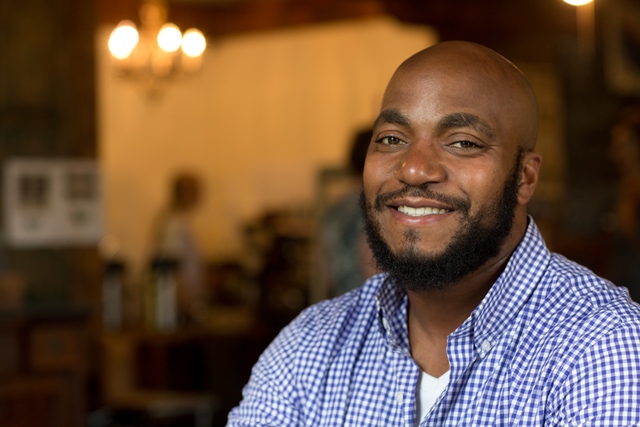“If your body is telling you to, seek medical help.”

If it could happen to him, it could happen to anyone.
There’s still a tone of disbelief in Donnell’s voice as he recounts May 1, 2018: The day the otherwise healthy 36-year-old Allentown resident had a stroke.
“It doesn’t have a name or an age on it,” he says. “It can happen to anyone.”
According to the Centers for Disease Control and Prevention, it happens to about 795,000 Americans each year, killing about 140,000 of them. Donnell ended up being one of the lucky ones.
He awoke that morning with a tingling sensation in his right arm. He tried to stand only to realize his right side was paralyzed. He would spend an hour sitting in bed, attempting to piece together what had happened -- critical time wasted.
“I spend countless hours educating everyone about the importance of recognizing the signs of stroke and reacting by calling 911,” says Connie Moceri, RN, Director of Disease and Stroke Management. “Time is brain and with each passing second millions of neurons are being starved of blood containing oxygen which nourishes the brain to function.”
Every second Donnell waited could have been costly.
“As this is going on, I kind of had tears in my eyes because I thought that I was paralyzed, he says. “In my head, I could tell myself that I wanted to move my arm, but I just couldn’t.”
Not knowing what to do, he phoned an uncle who upon seeing Donnell called 911. A swift ambulance ride brought him to RWJUH Hamilton, where “code stroke” went into immediate effect.
“We perform a neurological exam including a NIH stroke scale,” says Lasanta Horana, MD, medical director of the Emergency Department. “We obtain a head CT, EKG and blood work, and begin a teleneurology consult where you are able to talk and interact with a neurologist right away.”
If a stroke has occurred, the next step is to administer tPA, a clot-busting drug to restore blood flow to the brain. But luckily for Donnell -- especially given the amount of time that had passed -- that wasn’t necessary. His body took care of the clot by itself. He has no physical or mental impairments as a result of the stroke.
“I was in a nightmare and I woke up after two hours,” he says.
“Strokes,” Moceri explains, “can happen to anyone, at any age.”
For Donnell, some of the risk factors were there, such as having a family history, having too much “bad cholesterol” (LDL) and smoking.
“Individualizing education is key in stroke prevention,” Moceri says. “Everyone needs to know what increases their risk for having a stroke.”
Risk factors include high blood pressure, diabetes, hyperlipidemia, sedentary lifestyle, family history of stroke and smoking. Lifestyle modification to control these risk factors is a critical part of stroke prevention. Eating a heart healthy diet, controlling blood pressure/blood sugar and getting regular exercise can significantly reduce risk of stroke.
Donnell has taken all of that to heart. The day he left the hospital, he quit smoking. He’s also telling friends and family the importance of knowing the stroke signs.
“Health is wealth,” he says. “You’ve got to take care of yourself, and if your body is telling you to, seek medical help. If the symptoms went away, I don’t think I would have sought help.”
Know how to spot a stroke? Think of the acronym, BE FAST:
B- balance – sudden onset of dizziness, clumsiness, loss of balance
E – eyes – sudden onset of blurred vision, double vision or loss of peripheral vision
F – face – sudden drooping of mouth
A – arm – sudden numbness, tingling, heaviness, weakness of arm and/or leg or both
S – speech – suddenly slurred, unable to speak or words don’t make sense
T – time – call 911 immediately and get to the nearest emergency room